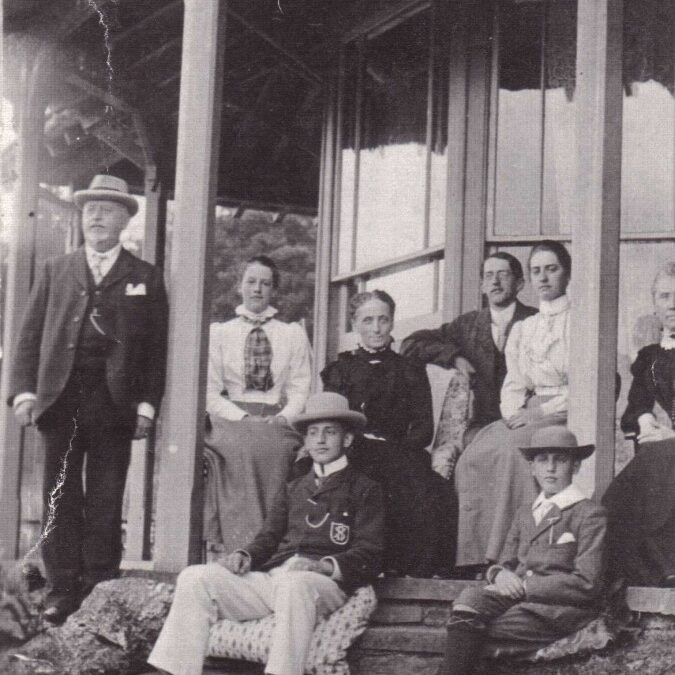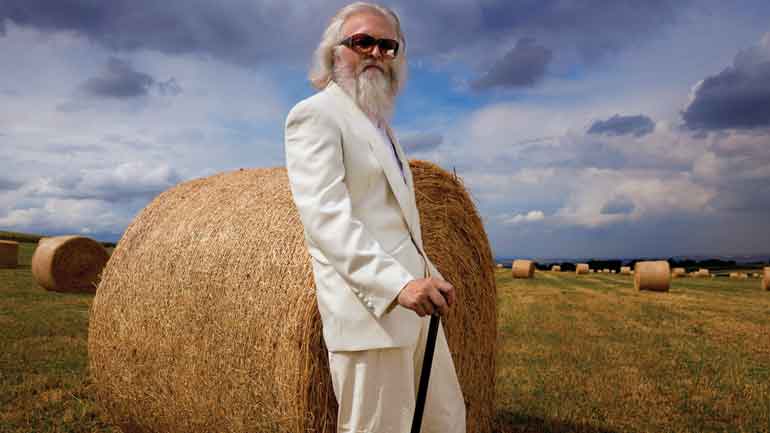Last year I directed an AHRC Collaborative Skills Development award in conjunction with IES and the Blackburn Museum and Art Gallery in Lancashire. Our research focused on the collection bequeathed to the Museum by Edward Hart (pictured here third from the right behind his mother and sister). When Hart died in 1946, he left his collection of over 800 books, including twenty-one medieval manuscripts and 350 early printed books to the ‘citizens of the town’, in care of the Museum.
Our project aimed to draw attention to this neglected collection and to attract scholarly interest to its under -researched holdings. As the project drew to a close in December of 2013, we felt that many of our objectives had been achieved. We had mounted an exhibition of ten items from the collection in Senate House Library during the month of November, produced a catalogue for the exhibition, including new research on the manuscripts and early printed books, and through our blog and traditional print media, we had drawn attention to the collection as a whole at the Blackburn Museum.
In December I received an email from the music journalist John Birch. He had found my name on the IES website, and noted that I was interested in post industrialist collectors of the Northwest. John was writing a biography of the Northeast songwriter, Paddy McAloon, who rose to fame in the 1980s as leader of the band, PreFab Sprout.
John asked if I would be interested in writing a formal analysis of the lyrics to a composition that McAloon had written that was a departure from his previous pop format. This was a twenty-two minute song called ‘I Trawl the Megahertz’. When McAloon released the song in 2003, it was ignored by the pop music establishment. Even the Guardian, McAloon’s steadfast supporter, made no comment on this release. ‘I Trawl the Megahertz’ was composed by cutting together excerpts from late night radio confessional broadcasts, which were then superimposed on an enigmatic cinematic score.
So, was I interested? This was really a very surprising research outcome for our Hart project. To be honest, I had only vague memories of the music of PreFab Sprout from the 1980s. While I admired much of the work of (ironically) Northwestern bands like Echo and the Bunnymen, Teardrop Explodes and the Wild Swans in the 1980s, my current knowledge of pop music was limited to the music suggested to me by my adolescent children. Umm, Alt J perhaps? And besides, I doubted very much if Edward Hart would approve of Paddy McAloon.
But my essential uncoolness was just what was required for this job. Literary analysis was what was called for, and I decided to retain my state of untainted uncool by ignoring new historicist methodology. I did no research on McAloon or his canon of works beyond what John Birch had included in his brief. What I encountered in ‘I Trawl the Megahertz’ was a carefully constructed poetic narrative, using the banal language of the radio phone –in, to engage with deeply human refrains.
The song itself can be heard here:
https://www.dropbox.com/s/95ij3anis2lxkdb/01%20Track%201.mp3
John Birch’s book on McAloon, Desire: Paddy McAloon’s Pre Fab Sprout will be published by Indigenous in July of this year. In the meantime, here is an excerpt from my contribution to the book:
This poetic lyric is a descendent of the Dadaist ‘cut up’ technique pioneered by William Burroughs and Brion Gysin in the 1960s. A ‘cut up’ text is physically divided, originally with a vertical razor cut down the centre of the composition and horizontally across the middle of the work. The parts are then separated and finally randomly reassembled, revealing a new composition. The ‘cut up’ text or image, although intrinsically artificial in its construction, proved capable of robust interpretation. As championed by Burroughs, ‘cut up’ was a central influence in popular culture via beat poetry through the 1960s. Artists working in diverse media found that the surprising poignancy of reassembled themes suited their purpose in juxtaposing seemingly unrelated texts and images. The technique was especially influential in popular culture. It has sustained a place particularly in the realm of pop lyrics. David Bowie experimented with ‘cut up’ in the 1970s after a meeting with Burroughs, inspiring much of the lyric technique in Diamond Dogs. Tacita Dean’s 2011 homage to analogue film (Film, Turbine Hall, Tate Modern), is a descendent of ‘cut up’ both with regard to the physical manipulation of analogue film, via ‘cutting’, as well as the intense juxtaposition of hugely differentiated objects and tableaux during the course of the film.
In Trawling the Megahertz, Paddy McAloon uses aurally harvested narrative segments, assembled from call-in radio talk shows, to construct a life story. Over a soundtrack of poignant strings interspersed with jazz- inspired muted trumpet riffs, the speaker, an American woman, states that she is ‘telling myself the story of my life’. The overwhelming trope in her narrative is loss: the loss of love, the loss of innocence, the loss of beginnings, and the inability to return to any beginning at all. Religious imagery weaves in and out of the narrative but the speaker suggests no resolution through this channel. What is sustained throughout is a desire for reanimation of the past itself. Hope is purveyed only through remembrance; redemption only through belief in memory.
While research on an early twentieth century collector may have been a rather obtuse preparation for analysis of the lyrics of Paddy McAloon, the experience was both a challenge and ultimately a privilege. I’m now most definitely a fan, a truly unexpected research result.
Cynthia Johnston is Course Tutor for MA History of the Book at the Institute of English Studies.
Images: (top) The family of Edward Hart; ‘Brooklands’ Blackburn, c. 1900 | (middle) Paddy McAloon, Durham 2013 (Mojo Music)



